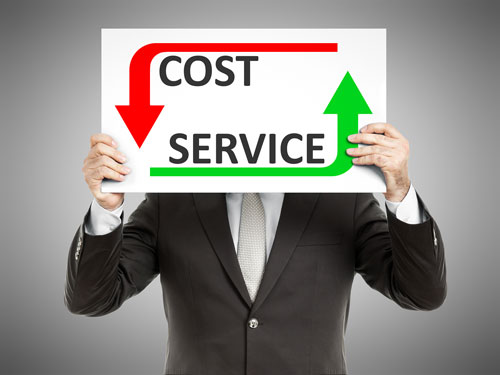John Tschohl suggests that in the pursuit of exceptional service, we should resist the urge to relax financial controls.

The economy is improving, bringing with it a sense of optimism. That optimism, however, can be dangerous. All too often, it brings with it a tendency to breathe a sigh of relief and loosen your grip on the financial reins.
While it might be human nature to relax when things get better, it is not good business practice. The measures you put into place to control costs and reduce waste during the past few years helped you to survive; it would be foolish to discontinue them now.
While you certainly deserve to celebrate your survival of the recent economic downturn, if you want to continue that celebration into the future, it’s imperative that you maintain control of your finances. Competition at every level—from price to product to service—continues to be stiff, bringing with it the necessity to keep a watchful eye on spending.
Customers are not willing to pay higher prices just to keep you in business. Cutting costs and controlling waste, combined with exceptional customer service, are the keys to your continued success. When you offer high-quality products at competitive prices, you can pass those savings on to your customers. When you do so, you will attract new customers and keep current customers. You will increase sales and profits. You will thrive.
Sure, there are a few companies in the world that can charge more without any major repercussions. Disney and Apple are two examples. Their products and services are so superior that consumers are willing to pay whatever it takes to purchase them. That is not the case for most businesses, however.
In order to remain competitive—and viable—it’s critical that you reduce costs and pass the savings on to your customers. You can do so by taking these steps:
1. Be aggressive. Look for ways to eliminate waste in every department, keeping in mind that no waste is too small to ignore. Those small savings add up to major savings. Let me give you an example: If you have 1,000 employees working an average of 250 days a year, and those employees identify ways to save the company $1 a day, that is an annual savings of $250,000. Taking that a step further, if the company has annual sales of $20 million, at a 5 percent profit margin, this is the equivalent of increasing sales by $5 million.
2. Turn to the experts—your employees. They know where the waste is and can identify ways to eliminate it. Making your employees your partners in this process does two things: It will result in impressive savings, and it will send a message that you value your employees and their suggestions. And, when employees feel valued, they are more productive and more committed to the company’s success.
3. Look at people. Leave no stone unturned. Are there people who can be eliminated? Terminate under-performing employees; they cost the company money and do little or nothing to add to the bottom line. They also can cost you money by driving customers away with bad attitudes, lack of knowledge, and poor customer service skills. In many cases, those employees do not need to be replaced, which adds to the savings.
4. Look at technology. Technology can save you money by speeding up processes and improving customer service. The only technology I suggest you eliminate completely are telephone systems that require callers to go through an endless list of options before they can talk with a real person. Use technology only when it benefits the customer.
5. Eliminate ridiculous policies and procedures. Not only do they get in the way of providing good customer service, they cost you money because you need people to enforce them. When you eliminate those policies and procedures, you can eliminate the people you have hired to enforce them.
You can’t count on the economy remaining strong. You must do everything in your power to control costs and ensure the success of your company now and into the future.
About the Author
John Tschohl, internationally recognized service strategist, is founder and president of the Service Quality Institute in Minneapolis, Minnesota. Described by USA Today, Time, and Entrepreneur as a “customer service guru”, he has written several books on customer service.




